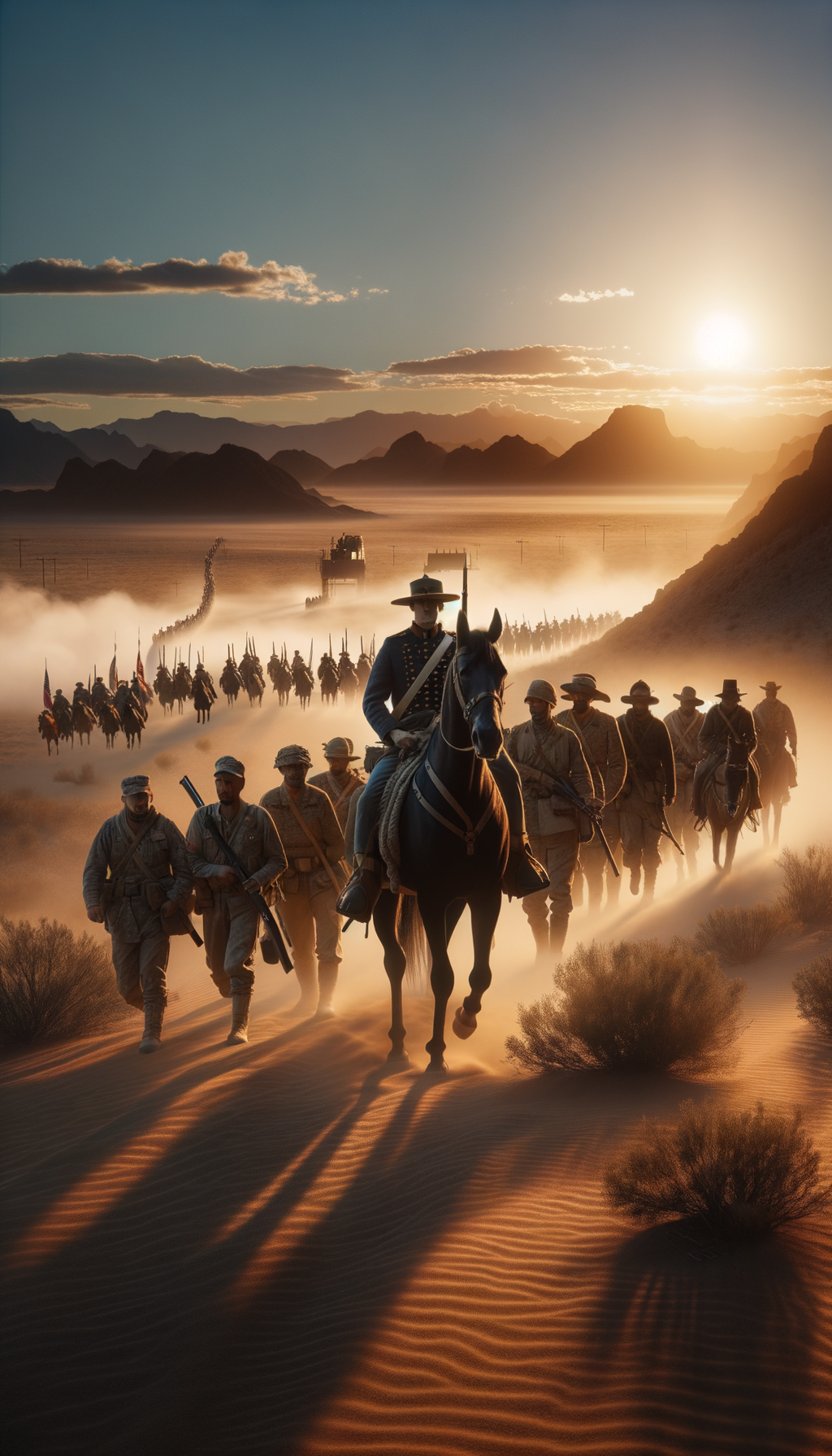Mexico – Chasing Shadows: The Punitive Expedition of 1916
TLDR;
- Event: The Punitive Expedition began on March 15, 1916, when the U.S. Army, led by General John J. Pershing, entered Mexico to pursue Pancho Villa after his raid on Columbus, New Mexico.
- Challenges: The expedition faced logistical difficulties and the complexities of operating in Mexico’s rugged terrain, with Villa evading capture through guerrilla tactics.
- Outcome: The expedition failed to capture Villa and lasted for months, but it introduced early use of motorized vehicles and aircraft, influencing future U.S. military strategies.
- Impact: Despite not achieving its primary goal, the expedition did not lead to a long-term deterioration in U.S.-Mexico relations and highlighted the need for diplomatic efforts.
–
Story
The desert sun was barely rising when the dust clouds began to form on the horizon. General John J. Pershing, astride his horse, squinted into the distance, his mind set on a broader mission: to disrupt Pancho Villa’s operations and diminish his ability to conduct further raids into the United States. The United States Army was on the move, crossing into Mexico on March 15, 1916, in what would become known as the Punitive Expedition.

The attack on Columbus, New Mexico, by Villa’s forces had sent shockwaves through the United States. President Woodrow Wilson, under pressure to respond, authorized a military expedition to pursue Villa and bring him to justice. The task fell to Pershing, a seasoned commander known for his tenacity and strategic mind.
As the troops advanced into the rugged Mexican terrain, they faced not only the challenge of capturing Villa but also the complexities of operating in a foreign land. The expedition was a logistical nightmare, with supply lines stretched thin and communication hampered by the vast distances and hostile environment.
Despite the initial momentum, the expedition soon turned into a frustrating game of cat and mouse. Villa, a master of guerrilla warfare, evaded capture time and again, slipping through the fingers of the American forces. The expedition dragged on for months, testing the patience and resolve of the soldiers and their leaders.
Ultimately, the Punitive Expedition failed to capture Pancho Villa, but it left a lasting impact on the U.S. military. While it was not a direct precursor to the mechanized warfare of World War I, as the use of motorized vehicles and aircraft was still in its infancy, it did see the early use of these technologies. The expedition ended without the desired victory, but it marked a significant moment in U.S.-Mexico relations and military history. Although it strained relations, diplomatic efforts continued, and the expedition did not lead to a long-term deterioration in relations. The lessons learned in the deserts of Mexico would shape the future of American military strategy.
–
| Would a different strategy have changed the outcome of the Punitive Expedition? |